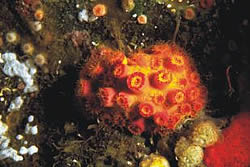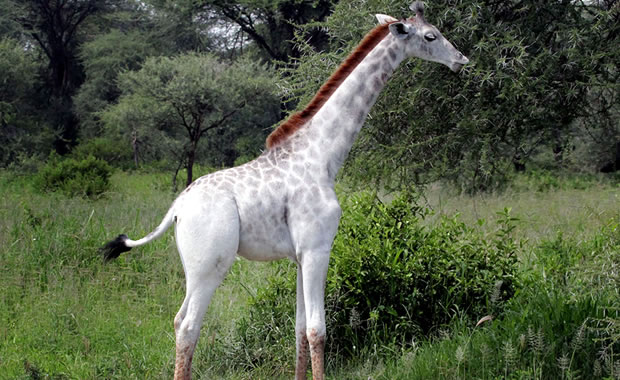
Floreana Coral
© Paul Humann |
Creature Profile
The floreana coral is a marine organism only found in the Galapagos Islands of Ecuador. Corals are tiny polyps that are related to and look like sea anemones. Polyps divide as they grow and form coral colonies. As these colonies build up on top of each other, they gradually form as "coral reefs." Individual coral colonies can reach up to 1000 years old, forming very slowly over time.
The floreana coral is a scleractinian coral, meaning it secretes a stony cup of limestone around itself as a skeleton (as opposed to soft corals which are more sponge-like). In the water, the floreana coral is bright pink in color, and when dry, it is red-black.
Coral reefs can grow in a variety of places from sunny, warm open regions to dark caves. Floreana coral can be found on the ceiling of caves, ledges and overhanging rocks in between 6 and 150 feet deep in the water. They feed on zooplankton by capturing them in their outstretched tentacles.
The main threat to the species is climate change and increasingly severe naturally occuring weather changing events causing dramatic rises in water temperatures and reduced nutrient availability around the Galapagos Islands. Floreana corals are very sensitive to increasing temperatures. The unique biodiversity of the Galapagos Islands is recognised and valued, and the region is now protected and designated as a marine reserve, but unfortunately, these measures can not protect corals from the threats of natural climate change.
March 17, 2009
Glenn, C. R. 2006. "Earth's Endangered Creatures - Floreana Coral Facts" (Online). Accessed 4/26/2024 at http://earthsendangered.com/profile.asp?sp=1655&ID=11.
Need more Floreana Coral facts?




